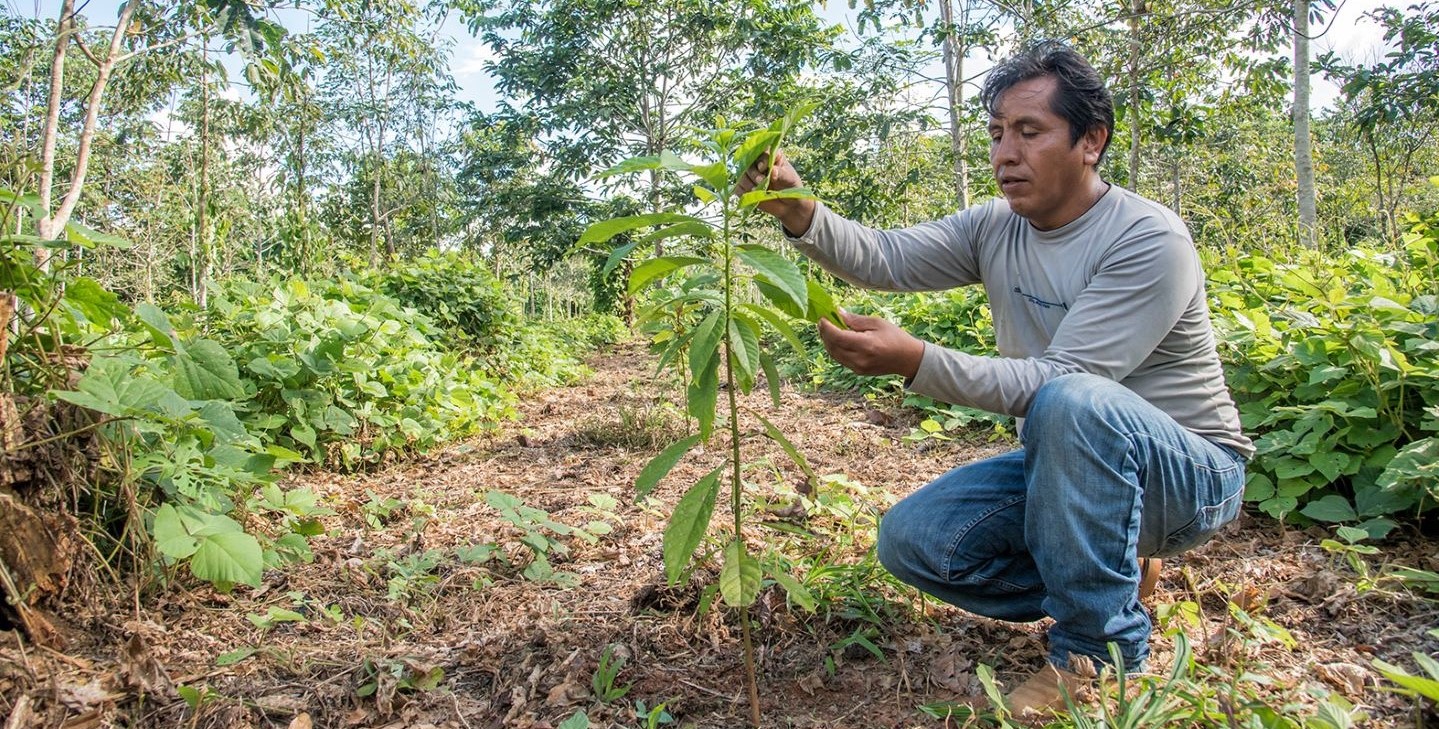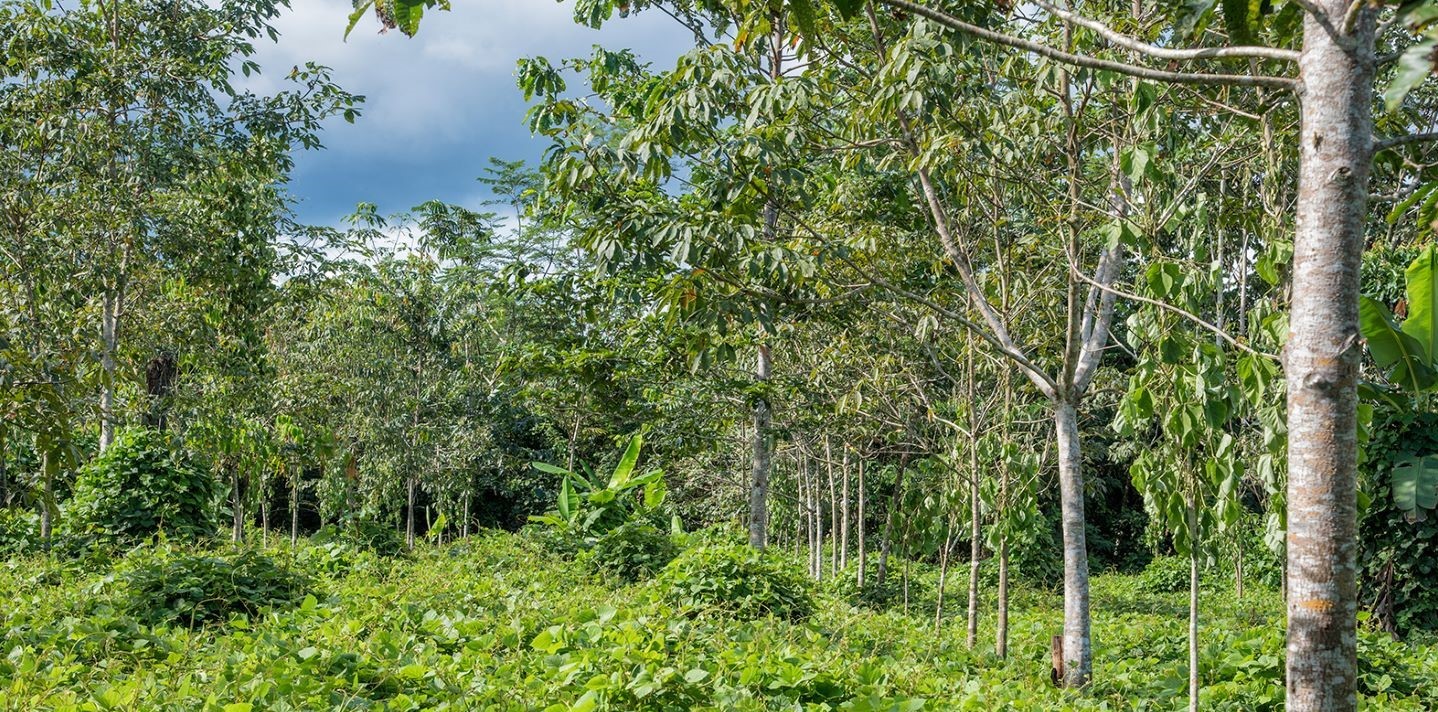A green new hope for degraded soils
IFAD Asset Request Portlet
Asset Publisher
A green new hope for degraded soils
Estimated reading time: 4 minutesWorldwide, over half of all arable land suffers from degradation: its soil can nurture crops only to a limited extent, and in some cases, not at all. And this number is growing at a rate of 12 million hectares per year – that’s 23 hectares per minute. Beyond making the land unproductive, the sheer amount of degradation is threatening the livelihoods and food security of rural-dwellers.
In Bolivia, for example, about 35 per cent of all agricultural soil is currently degraded. In the Amazonian department of Pando, a cattle-ranching region, degraded soil often takes the form of barbechos – patches of land that have turned into desert due to overgrazing. From above, they look like open wounds in the lush forest.
Yet, today, the barbechos are being revitalized by determined farmers who have taken on the challenge.
“When I arrived, it was almost impossible to plant anything,” says Néstor Ruiz, a small-scale farmer in the Nueva Esperanza community. Its name translates to “new hope” – a very fitting name, as it turns out.
Néstor is not originally from Pando. He grew up in Bolivia’s Cochabamba tropics and, after his parents sold their land, he lived a nomadic life, moving first to Argentina and then Brazil to support himself and to learn new ways of doing things.
Then, in 2009, Néstor got an opportunity that changed his life. Through a government programme aimed at settlers from the Cochabamba tropics, he was allotted a farming plot in Nueva Esperanza.
“I started growing seedlings of Brazil nut and rubber tree. After many failures, I managed to get the plants to bloom. They were now ready to be replanted in the ground,” he recounts.

To move the plants, however, he first needed to rehabilitate the soil. For this, he relied on an old ally he had come to know well during his travels: the kudzu vine. Although considered invasive in other parts of the world, this creeping legume can be a valuable tool in the Amazon region, when managed carefully. It conditions the soil by capturing atmospheric nitrogen; its leaves can serve as fodder; and its fruits provide green manure.
“I got half a kilo of kudzu seed from a colleague, and managed to cover four hectares,” says Néstor. He proudly points out the dark, rich soil under the kudzu plant, contrasting it with the original dry and degraded soil, barely centimetres away, in the same furrow.
“The kudzu grows in the form of creeping leaves that constantly sprout and spread everywhere. It even climbs trees, and that’s why it is important to have it under strict control, so it doesn’t affect the plants,” he explains.
“That’s why I rehabilitate just a portion of the plot with kudzu and, when the soil is ready, I pass the tiller to take it all out and plant vegetables or corn. After the harvest, I plant kudzu again, then I take it out and plant again.”
Néstor also participated in a community reforestation plan that was supported by the IFAD-funded ACCESOS project. This rural development initiative, implemented by Bolivia’s Ministry of Agriculture and Land, ended in 2019, but the benefits it created extend to this day.
ACCESOS, a US$59 million investment aimed at improving the living conditions of rural Bolivian communities, benefited more than 31,000 families in 52 municipalities, improving their food security and nutrition, increasing their incomes and strengthening their resilience to climate change. Through the project, participants like Néstor were able to innovate and identify the best ways to condition the soil.

“Thanks to the support of ACCESOS, we have bought tools as well as seedlings of açai, copoazú, rubber tree, Brazil nut, royal palm and medicinal plants such as sangre de grado,” says Néstor.
“Reforestation has allowed us to recover the natural springs that flow into the drinking water system that supplies the community,” he adds.
“We feed ourselves with the food we produce in our plots. The economic benefits will come once we are able to extract wood, rubber and Brazil nut from the trees we’ve planted. But to get to that point, we need to give nature some more time.”
Néstor has taken this task as his vocation, above even starting a family, and freely shares his seeds and his knowledge about soil conditioning with others. He’s currently working with the 18 families in Nueva Esperanza who participated in ACCESOS.
“I encourage people to keep cultivating Brazil nut trees, because we know that this is the basis of our economy in Pando. Once the trees grow, they will give shade to the kudzu and it will die away, having done its job. Later, we will nourish the soil with rubber trees and other plants,” he says.
“It’s a gamble, and it requires a lot of faith in the long run, plus a lot of work, but it's worth it. More worth it if we take into account that we are helping find alternatives to deforestation, and making it possible for the forests to stay alive for future generations to enjoy and benefit from them.”
Learn more about IFAD’s work in Bolivia.
Publication date: 03 December 2021